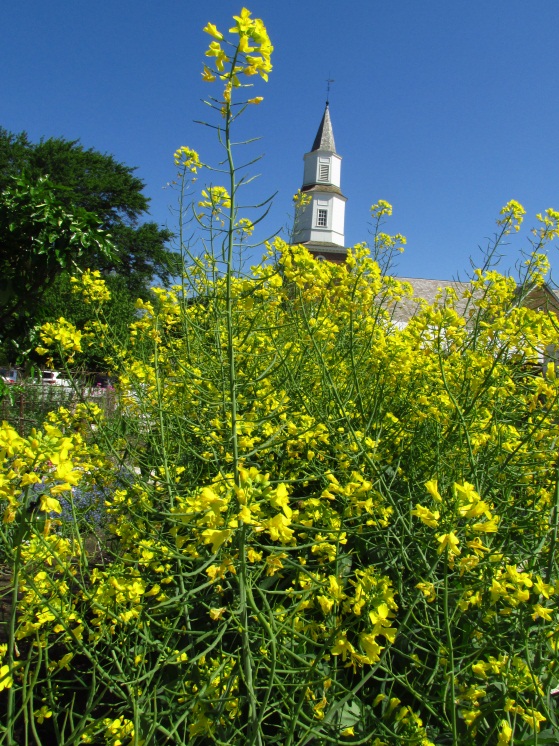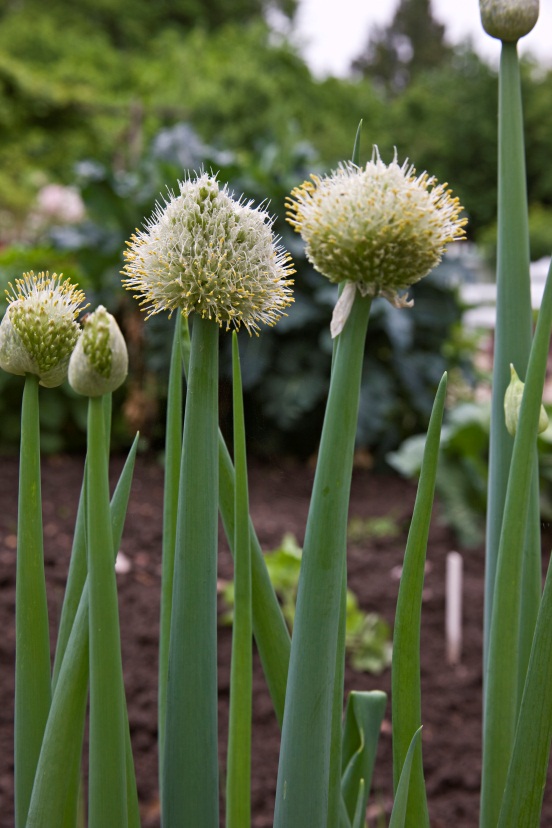With the onset of warmer weather, the garden is making prodigious progress in both flower and leaf. The Rapeseed is near 7 feet tall and is the most asked after plant in the garden this week.
Rape is one of the more ancient forms of that most useful group of plants classed as crucifers such as cabbage, kales, cauliflower and the like. The name Rape derives from the Latin rapum, identifying it as a species of turnip. It has been cultivated since at least 2000 BCE and was chiefly grown for its oil, obtained by pressing the seeds, and used primarily as lamp oil. However, it has lately found acceptance as a small salad as explained by John Abercrombie in The universal gardener and botanist (1778), who advises that the leaves “are always in perfection as such when quite young, or only a few days old, whilst in the seed leaf.”
Rape is also commonly used for bird seed and the partiality that various fowls have for it has long been a challenge in field culture, as Charles Bryant observed in Flora diætetica (1783): “All domestic fowls, and several wild ones, especially pheasants and partridges, are very fond of these seeds, and will destroy a great part of a crop unless it is well guarded.”
This versatile crop makes hardy forage for cattle and has even found uses in medicine, as explained in Dr. Allen’s Synopsis medicinæ (1730): “In treating of Carbuncles, we often applied, the first or second day, the Leaves of Red Cabbage, besmeared with Rape oil.”
The oil is generally inedible for humans but in the modern world, ingenious gardeners have transformed this plant to produce the universally admired Canola oil. Canola is the result of crossing Rape with other several Brassica species and is actually an acronym standing for CANadian Oil Low Acid.
The other plant that has garnered the most comments this week is the Welsh Onion. This is the ancestor of the modern green onion or scallion. It seems to originate in Siberia and traveled west to Germany where it was named welsche onion meaning foreign onion so it is in no way a product of Wales. It meets a dead end in Europe but it also travels east to Asia where it becomes the Tokyo Long White bunching onion found in markets to this very day.



Leave a Reply